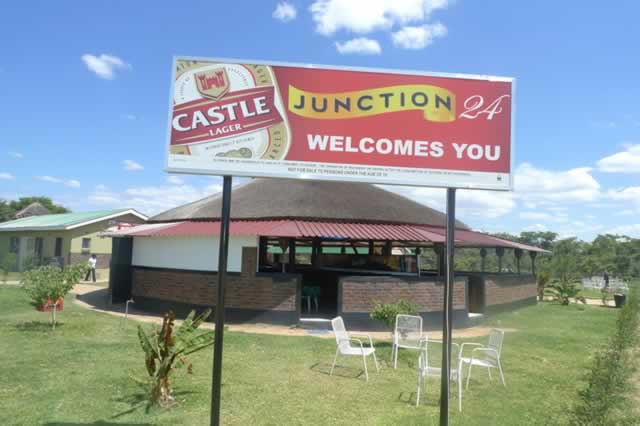![Zimbabwe is, by most accounts, the best place on the planet to farm Nile crocodiles]()
Zimbabwe is, by most accounts, the best place on the planet to farm Nile crocodiles
Richard Sainsbury Business Correspondent
AFTER a strong bull run on the Zimbabwe Stock Exchange during 2013, looking at the economic fundamentals, a market correction is imminent.
We, therefore, expect to see increased volatility on the ZSE for 2014, which in our opinion result in investors taking a more defensive approach to their portfolio construction.
One of the many strategies implemented by local fund managers over the years has been to increase their exposure to dual listed stocks such as PPC, BancABC and Old Mutual which derive most of their income from outside of Zimbabwe.
One interesting company that is often overlooked under companies on the ZSE with limited exposure to Zimbabwe is Padenga.
Padenga is a 100 percent export company, selling crocodile skins to tanneries owned by large luxury brands such as Louis Vuitton and Hermes to name a few.
Therefore, the company does not have significant exposure to the Zimbabwe economy but is, however, exposed to risks in the global economy.
After the global financial crisis of 2008, Padenga observed that demand for lower-end crocodile skins used mainly in the watchbands industry dropped off significantly, whilst the demand for large quality skins used mainly for the production of handbags and other luxury accessories, stayed strong or in some cases even increased.
Against this background, Padenga was forced to rethink and restructure its business model to meet the new demands of the crocodile skin market.
Whilst the recession financially crippled a lot of people, it did not change the fact that super wealthy people were super wealthy and they would continue to spend on luxury products such as crocodile leather handbags and other accessories.
Crocodile skin handbags on luxury brands can go for as much as US$50 000 with a five-year waiting period whilst top quality skins sell for as much as US$600 per skin.
The main reason why these luxury brands can afford to sell these products at this high price is the exclusivity of the product.
Like all products that are considered to be a part of the luxury industry, the difficulty in attaining the materials used contributes heavily to the price that can be charged.
Because of the difficulty in farming these crocodiles to the specifications that the premium market desire, the supply remains limited and doesn’t meet the demand.
The reason for this is that crocodiles are extremely difficult to farm due to the aggressive nature of the animal not only against handlers but also against each other.
They are highly territorial animals and as a result have no problem biting each other to show dominance.
However, this is a problem for the farmer whose price is determined by the quality of the skin sold and any bite marks would seriously decrease the price.
Saltwater crocodiles can fetch the best price as they are bigger animals and the premium market demands big skins.
However, saltwater crocodiles are again more difficult to farm than Nile crocodiles.
This is because this species is more territorial and aggressive by nature than Nile crocodiles and therefore, is harder to farm effectively.
With breeding these animals being a matter of life and death and a strong barrier to entry into that market, the supply of these skins is fixed to a certain extent, as there is only so much supply to meet a growing demand.
Therefore, in order to guarantee their individual supply as well as maintain the exclusivity of selling premium crocodile skin products, many of these luxury brands have had to invest in the supply structure of the skins especially over the last three years.
French luxury goods world leader, Moet Hennessy Louis Vuitton SA acquired a 51 percent stake in Heng Long Tannery in Singapore for approximately US$161 million.
Heng Long was a tannery listed on the Singapore Stock Exchange and was a tannery specialising in rare skins.
Louis Vuitton also bought a farm in Innisfail (Australia) in far north Queensland for US$2,5 million, while Hermes has bought a farm in Cairns, also in the state’s north and two in the Northern Territory.
In January 2013, French luxury brand, Hermes announced that they had acquired French calf leather tanners, Tannerie d’Annonay located in Annonay in the French Rhone valley.
The tannery is one of the four owned by Hermes through their subsidiary HCP (Hermes Cuirs Precieux).
There are a few more suspected acquisitions and investments but cannot be confirmed at this stage.
This illustrates the huge investment into this supply chain in order to meet the demand for these luxury brands.
Padenga has changed the structure of their business model in order to meet this demand. They have started growing their animals larger and more efficiently in order to meet the requirements set out by their market.
This has forced them to invest quite heavily in working capital in order to do this. However, the increment in price received for growing these products more than offsets the cost of doing so.
Most of these luxury brands have seen both increases in revenue and earnings.
We believe that the market for these products is mainly for the extremely rich people who are unlikely to have been affected by the recession.
We also think that with the growth experienced in the emerging markets during the previous decade, a new crop of ultra wealthy has risen and as a result increased the market for these products.
We believe it is the exclusivity and the “classic” nature of the crocodile skin accessory market that drives the demand.
Padenga is now coming to the end of their restructuring exercise and will see the first full implementation of this business cycle by December 2013.
Padenga’s target is to sell at least 43 000 large premium skins per year and from their half-year results, it seems they are on course to meet this target.
As one can see, Padenga does not rely on local demand for their product and its market seems to be exempt from the recurring economic problems in Zimbabwe.
Aside from the occasional fluctuations in the price of feed, Padenga is not susceptible to the country’s depressed demand or weakening disposable incomes.
Much like the tobacco industry, they are well-positioned to sustain any economic downturn within the country compared with other industries.
Another reason why they are likely to do well is the climatic competitive advantage, which they hold by operating in Zimbabwe.
Zimbabwe is by most accounts, the best place on the planet to farm Nile crocodiles.
This coupled with the difficulty in farming these prehistoric beasts are the reasons they are unlikely to be overburdened by competition within the region or anywhere else.
Feedback: richard@zam.co.zw











